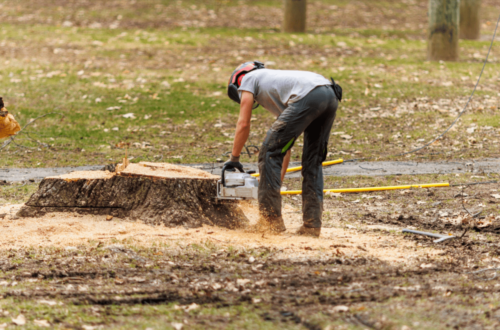Snow shovels have been an essential tool for centuries, dating back to ancient civilizations. In the early days, people used primitive tools such as wooden shovels and animal bones to clear snow from their paths. As time progressed, the design and materials of snow shovels evolved. In the 1800s, metal snow shovels became popular, providing a more durable and efficient option for snow removal. The invention of the snowplow in the 19th century revolutionized snow removal, but snow shovels remained a staple for clearing sidewalks, driveways, and smaller areas. Today, snow shovels come in a variety of designs and materials, including plastic, aluminum, and steel, each with its own benefits and drawbacks. The history of snow shovels reflects the importance of this tool in human civilization and its continued relevance in modern times.
Snow shovels have played a crucial role in the daily lives of people living in regions with heavy snowfall. In the early 20th century, the introduction of ergonomic designs and lightweight materials made snow shoveling less strenuous and more efficient. The invention of the snow pusher shovel in the 1960s further revolutionized snow removal, allowing users to push rather than lift the snow. This innovation reduced strain on the back and arms, making snow removal safer and more accessible for people of all ages. In recent years, electric and battery-powered snow shovels have entered the market, offering a convenient alternative to traditional manual shovels. The history of snow shovels is a testament to human ingenuity and the constant drive to improve tools and technologies for everyday tasks.
Choosing the Right Snow Shovel for Your Needs
When it comes to choosing the right snow shovel for your needs, there are several factors to consider. The first consideration is the size and weight of the shovel. A lightweight shovel is ideal for smaller individuals or those with limited strength, while a larger, heavier shovel may be more suitable for larger individuals or those with more strength and endurance. The blade width is another important factor to consider. A wider blade can clear a larger area with each pass, but it may also be heavier and more difficult to maneuver. On the other hand, a narrower blade may require more passes to clear the same area but can be easier to handle.
The material of the shovel is also an important consideration. Plastic shovels are lightweight and easy to maneuver, but they may not be as durable as metal shovels. Aluminum shovels are lightweight and durable, making them a popular choice for many users. Steel shovels are the most durable option but can be heavier and more expensive. Additionally, ergonomic features such as curved handles and adjustable shaft lengths can make shoveling more comfortable and reduce strain on the body. When choosing a snow shovel, it’s important to consider your own physical capabilities and the specific demands of your snow removal tasks to ensure you select the right tool for the job.
Proper Technique for Shoveling Snow
Proper technique is essential when it comes to shoveling snow to prevent injury and strain on the body. Before starting, it’s important to warm up your muscles with some light stretching to prepare your body for the physical activity ahead. When lifting snow, bend at the knees and use your legs to lift rather than your back. Keep your back straight and avoid twisting your body while lifting or throwing snow to prevent strain on your spine. It’s also important to pace yourself and take frequent breaks to avoid overexertion.
When shoveling, push the snow rather than lifting it whenever possible to reduce strain on your body. Use your legs and hips to generate power when pushing or lifting snow rather than relying solely on your upper body strength. Additionally, it’s important to maintain proper posture throughout the shoveling process to minimize strain on your muscles and joints. By using proper technique and being mindful of your body mechanics, you can reduce the risk of injury and make snow shoveling a safer and more manageable task.
Snow Shovel Maintenance and Care
| Aspect | Recommendation |
|---|---|
| Blade | Regularly inspect for damage and replace if necessary |
| Handle | Keep clean and dry to prevent rust |
| Storage | Store in a dry place to prevent rust and damage |
| Usage | Avoid using on rough surfaces to prevent wear and tear |
Proper maintenance and care of your snow shovel are essential to ensure its longevity and effectiveness. After each use, it’s important to clean off any snow or ice from the shovel blade to prevent rust and corrosion. If using a metal shovel, applying a thin layer of oil or lubricant to the blade can help protect it from rusting. Store your shovel in a dry area to prevent moisture buildup, which can lead to rust and deterioration of the handle and blade.
Inspect your shovel regularly for signs of wear and tear, such as cracks or bent handles. Replace any damaged or worn parts to ensure the shovel remains safe and effective to use. If using a plastic shovel, be mindful of extreme temperatures that can cause the plastic to become brittle and prone to cracking. Proper care and maintenance of your snow shovel will not only extend its lifespan but also ensure that it remains a reliable tool for snow removal season after season.
Safety Tips for Using a Snow Shovel
Snow shoveling can be a physically demanding task, so it’s important to prioritize safety when using a snow shovel. Before starting, it’s essential to dress appropriately for the weather conditions, wearing warm clothing, waterproof boots, and gloves to protect yourself from the cold and wet snow. It’s also important to stay hydrated and take frequent breaks to prevent exhaustion and dehydration.
When shoveling, be mindful of your surroundings and watch out for uneven surfaces or hidden obstacles under the snow that could cause trips or falls. Take care when lifting heavy loads of snow to avoid strain on your back and muscles. If you have any existing health conditions or physical limitations, consult with a healthcare professional before engaging in strenuous physical activity such as snow shoveling. By following these safety tips and being mindful of your physical limitations, you can make snow shoveling a safer and more manageable task.
Alternative Snow Removal Tools and Methods

While traditional snow shovels are effective for clearing snow from sidewalks and driveways, there are alternative tools and methods that can make snow removal easier and more efficient. Snow pusher shovels are designed to push rather than lift snow, reducing strain on the body and making it easier to clear large areas quickly. Snow blowers are another popular option for removing large amounts of snow with minimal physical effort. Electric or battery-powered snow shovels provide a convenient alternative to traditional manual shovels, requiring less physical exertion while still effectively clearing snow.
In addition to alternative tools, there are also alternative methods for snow removal that can make the task easier and more efficient. Applying ice melt or rock salt to sidewalks and driveways before a snowfall can help prevent ice from forming and make it easier to clear snow after it accumulates. Hiring a professional snow removal service is another option for those who prefer to avoid the physical demands of shoveling altogether. By exploring alternative tools and methods for snow removal, you can find the best solution for your specific needs and preferences.
The Environmental Impact of Snow Shoveling
While snow shoveling is a necessary task in regions with heavy snowfall, it’s important to consider the environmental impact of this activity. Traditional rock salt used for de-icing can have negative effects on vegetation, soil, waterways, and wildlife. Excessive use of rock salt can lead to soil salinization, which can harm plants and disrupt ecosystems. Additionally, salt runoff from roads and sidewalks can contaminate water sources, posing risks to aquatic life and water quality.
In recent years, there has been a growing awareness of the environmental impact of traditional snow removal methods, leading to the development of eco-friendly alternatives. Environmentally friendly ice melt products made from natural ingredients such as calcium magnesium acetate or potassium chloride are becoming increasingly popular as a safer alternative to traditional rock salt. Additionally, electric or battery-powered snow removal tools produce fewer emissions compared to gas-powered equipment, reducing their environmental impact.
In conclusion, while snow shoveling is a necessary task in snowy regions, it’s important to consider the environmental impact of traditional snow removal methods and explore eco-friendly alternatives whenever possible. By choosing environmentally friendly products and methods for snow removal, we can minimize our impact on the environment while still effectively managing winter weather challenges.





